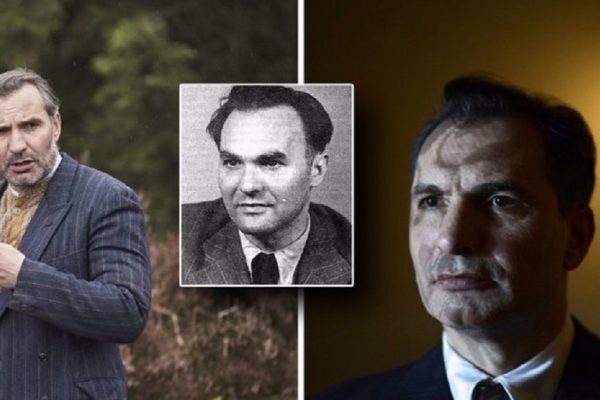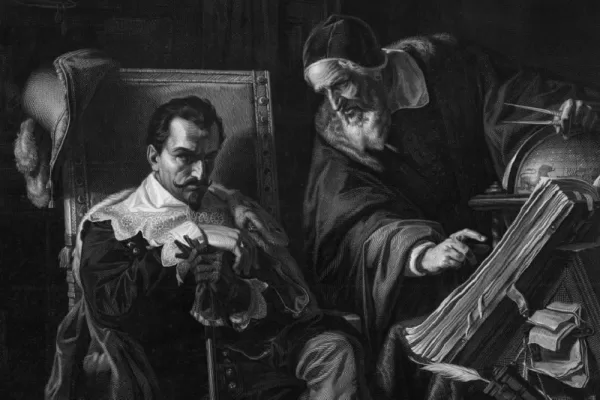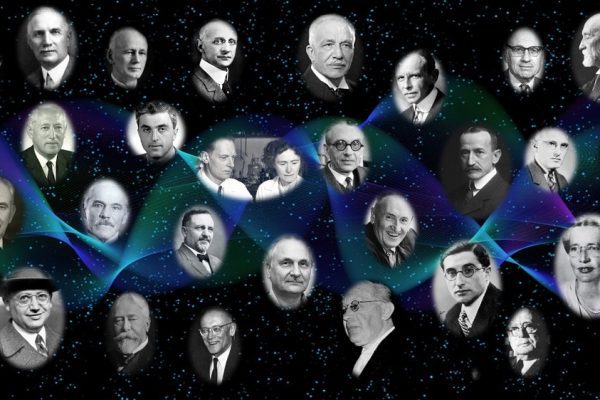Saint Adalbert of Prague; c. 956 – 23 April 997, known in Czech by his birth name Vojtěch, was a Bohemian missionary and Christian saint. He was the Bishop of Prague and a missionary to the Hungarians, Poles, and Prussians, who was martyred in his efforts to convert the Baltic Prussians to Christianity.
Born to a noble family in Bohemia, he received part of his education from Saint Adalbert of Magdeburg. At the age of 27, he was chosen as bishop of Prague. Those who resisted his program of clerical reform forced him into exile eight years later.
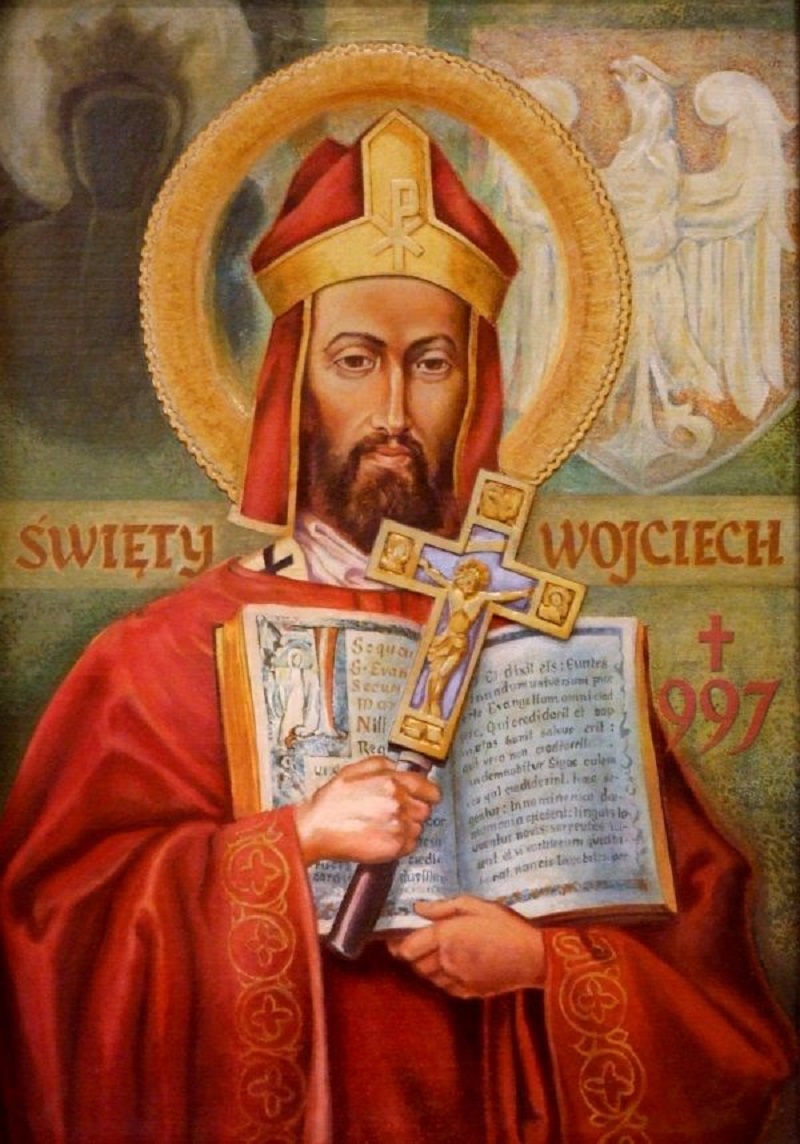
Saint Adalbert was born in Bohemia, of noble parentage during the middle of the tenth century. His father, a Slavonian, sent him to study at Magdeburg, under the care of the Archbishop Adalbert, who placed him in school, under the direction of a holy monk, named Odericus, where the pupils, by serious attention to their studies, and most exemplary morals, edified one another.
Saint Adalbert, having remained nine years in this school, made considerable progress in human sciences, but still more in the science of the saints for whatever time was allowed for recreation, he spent in holy prayer, in relieving the poor, and visiting the sick. Having made a copious collection of books, consisting chiefly of the writings of the Fathers and Doctors of the Church, he returned to Bohemia and entered the ecclesiastical state at Prague. Diethmar, bishop of that city, was greatly enamored of his virtue, and ordained him Subdeacon shortly before his death.
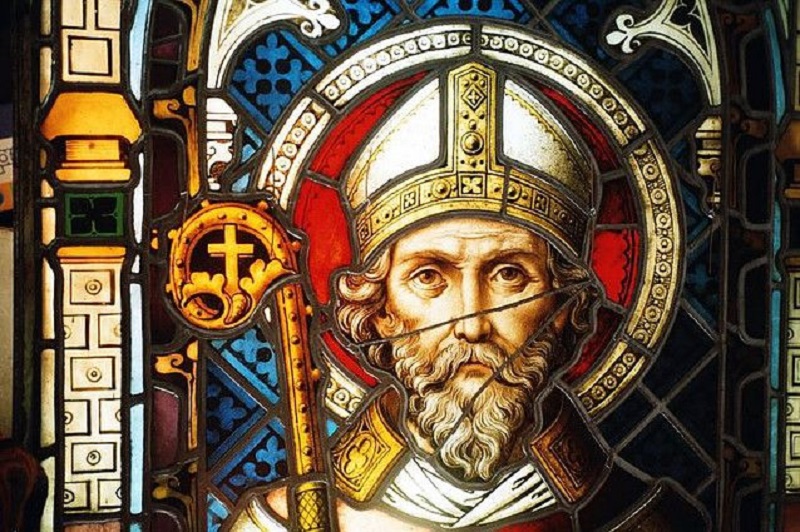
An assembly was held to propose a successor, at which the prince of Bohemia and other grandees were present, and, by unanimous consent, Adalbert was chosen. Notwithstanding all his reluctance, and his pleas of unworthiness and youth, he was obliged to accept the onerous charge and the election having met the approval of the emperor, our saint received the Episcopal consecration at the hands of Villegisus, Archbishop of Mayence. He immediately proceeded to Prague, to take possession of his see, and was received amid the acclamations of the people. In assuming the government of his Church, his extraordinary piety became manifest, for on all festivals he distributed abundant alms, and supported twelve poor persons continually. He slept upon the bare floor, or upon sack-cloth, and passed a considerable part of the night in prayer. His continual preaching and frequent visits to the sick and those in prison, manifested how totally he was devoted to the glory of God and the welfare of his flock.
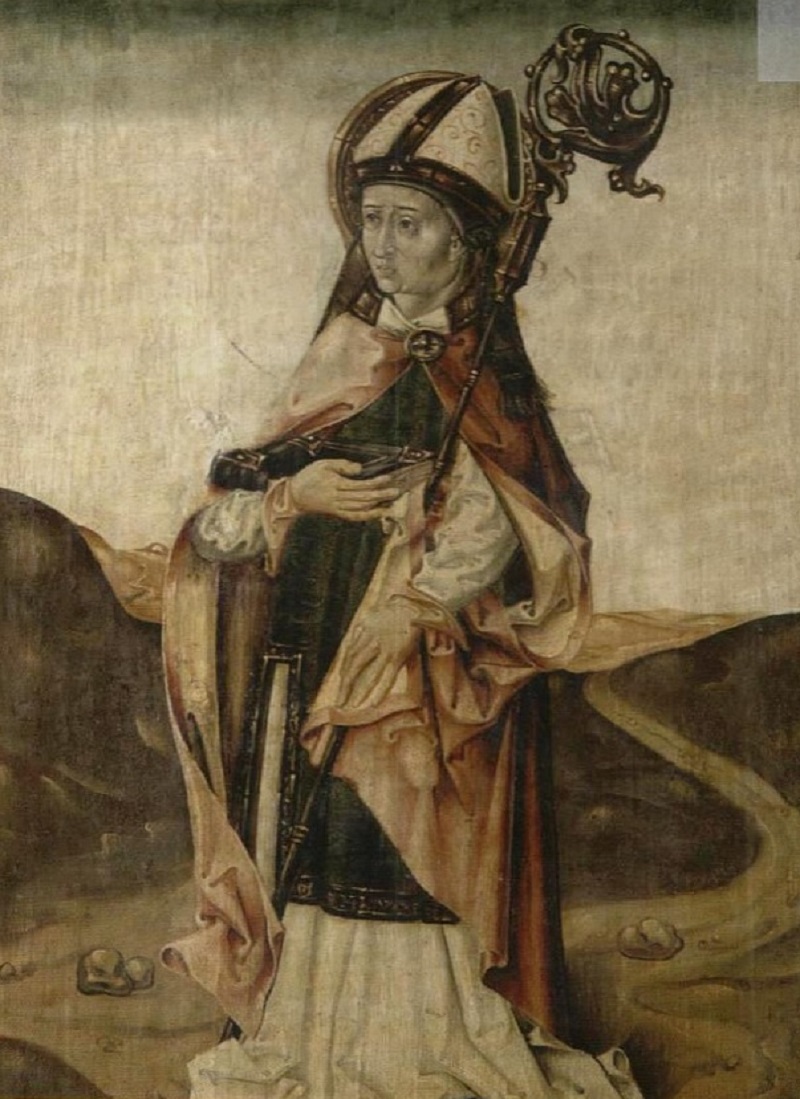
But they treated his admonitions with an obstinacy surpassing the enthusiasm with which they had at first hailed his arrival and Adalbert accordingly resolved to leave them, having first consulted, and obtained permission from Pope John XV. His first intention was to make a pilgrimage on foot to the Holy Land but on his arrival at Mount Cassino, the Abbot and some monks induced him to remain with them for some time, until it became known who he was whereupon the holy bishop proceeded to Rome, and, by the advice of the Pope, received the religious habit in the monastery of Saint Alexis, in the year 900. Here he lived in tranquillity for three years and half, until the Duke of Bohemia, moved by the wretched state of the Church at Prague, induced the Pope to send him back.
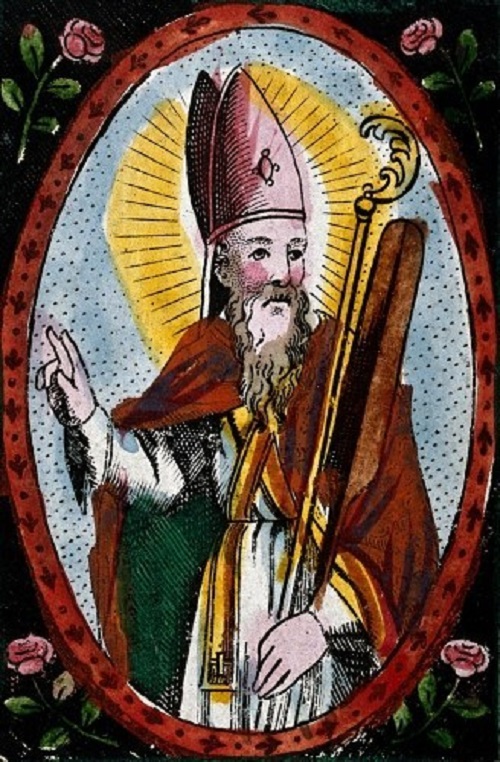
Upon his return, the most ample promises of obedience were made, but never fulfilled. So the saint again abandoned his rebellious flock and went to preach the Gospel to the idolaters of Hungary. His success here, however, was not proportionate to his zeal and the Bohemians continuing as obstinate as ever, he again returned to his monastery at Rome.
His success here, however, was not proportionate to his zeal and the Bohemians continuing as obstinate as ever, he again returned to his monastery at Rome.
He was obliged by the Pope to return a second time to Prague (the people of Prague requested his return as their bishop). Within a short time, however, he was exiled again after excommunicating those who violated the right of sanctuary by dragging a woman accused of adultery from a church and murdering her.
The saint set out in obedience to this command but being informed that his ungrateful flock had shown their implacable hatred of him by murdering his brothers; he requested the Duke of Poland to determine whether they were willing to receive him.
The Bohemians replied “Adalbert is a saint, and we are sinners so it is impossible to expect that we can live quietly together.” The saint took this as a sufficient exoneration from the solicitude of his Church and went to undertake the conversion of the pagans who were then in Prussia.
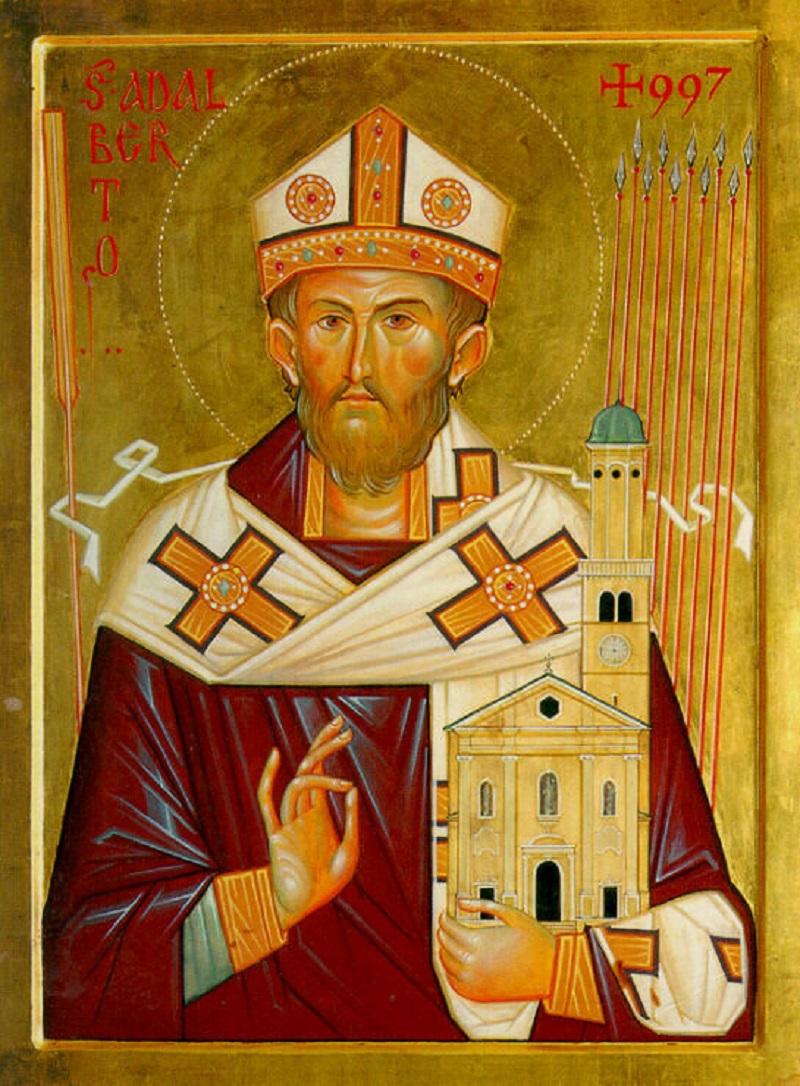
After he had suffered many hardships on this mission, the idolaters one day assembled in great numbers, and demanded of him why he had entered their country. The saint replied that he had come for their salvation and exhorted them to abandon the worship of idols and to adore the true God. But the barbarians were displeased at his words, and Siggo, the priest of the idols, ran him through the breast with his lance, whereupon the others rushed upon him also, while the saint, raising his hands to heaven, prayed to the Lord for their conversion. The inhuman wretches placed his head upon a pole and bore it away amid shouts of exultation. His martyrdom happened on the 23rd April, of the year 997, and the Lord honored him by many subsequent miracles.
This prelate, charmed with the happy disposition of his pupil, conceived for him the tenderness of a father, and gave him his name in admitting him to the sacrament of confirmation. Young Adalbert was a child of the Blessed Virgin. Being yet an infant, he was attacked by violent illness that reduced him to extremity. His parents then carried him to the church, and placed him on Saint Mary’s altar, and promised to consecrate him to the service of God if he should recover his health. Their prayers were heard.
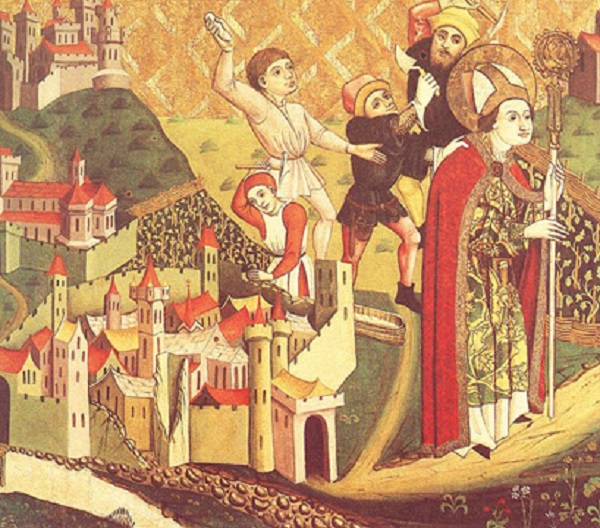
Geysa, or Giesa the Fourth, Duke of Hungary, had been converted to the Christian faith and baptized together with his entire family. Shortly after his baptism, and just before the arrival of our saint, he was informed in a vision that a heavenly messenger would arrive in his dominions. Saint Adalbert was therefore kindly received at his court and we are informed by Fleury that his preaching was followed by the conversion of many, and the erection of churches in various places. Geysa had contemplated the establishment of bishoprics throughout his dominions, but was told, in the vision already mentioned, that his hands had been stained with human blood, and that God had reserved the accomplishment of this great work for his son. This promise was amply fulfilled in the person of Saint Stephen, first king of Hungary, who seems to have been born about the time of Saint Adalbert’s arrival, and was baptized by him.
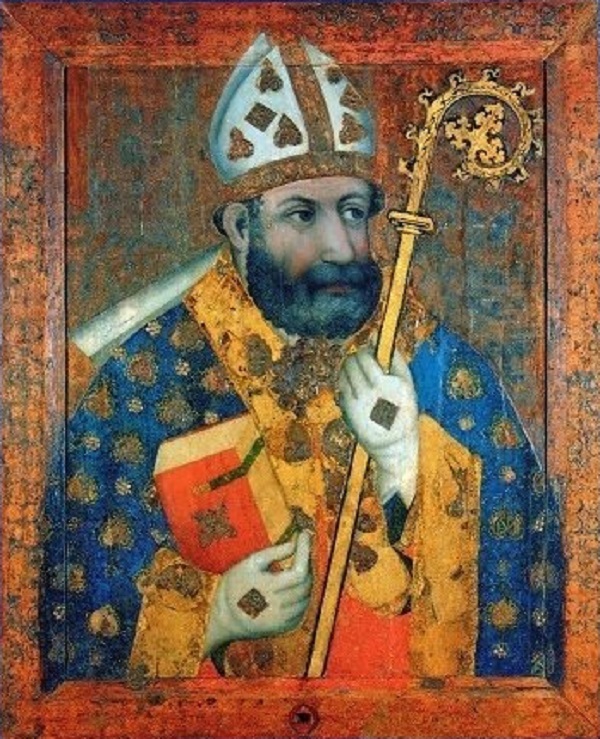
Saint Adalbert was executed on April 23, 997, as a suspected spy. In 1039, his relics were moved to Saint Vitus Cathedral in Prague and devotion to him spread quickly throughout Central Europe. The memorial of Saint Adalbert was extended to the Universal Church by Pope Saint John Paul II.
His Liturgical Feast day is April 23.
Reference: Victories of the Martyrs (or, The Lives of the Most Celebrated Martyrs of the Church) by Alphonsus Liguori and Eugene Grimm, Eugene. Published in 1888 and Women for Faith and Family.
Here’s a print and color graphic for you…
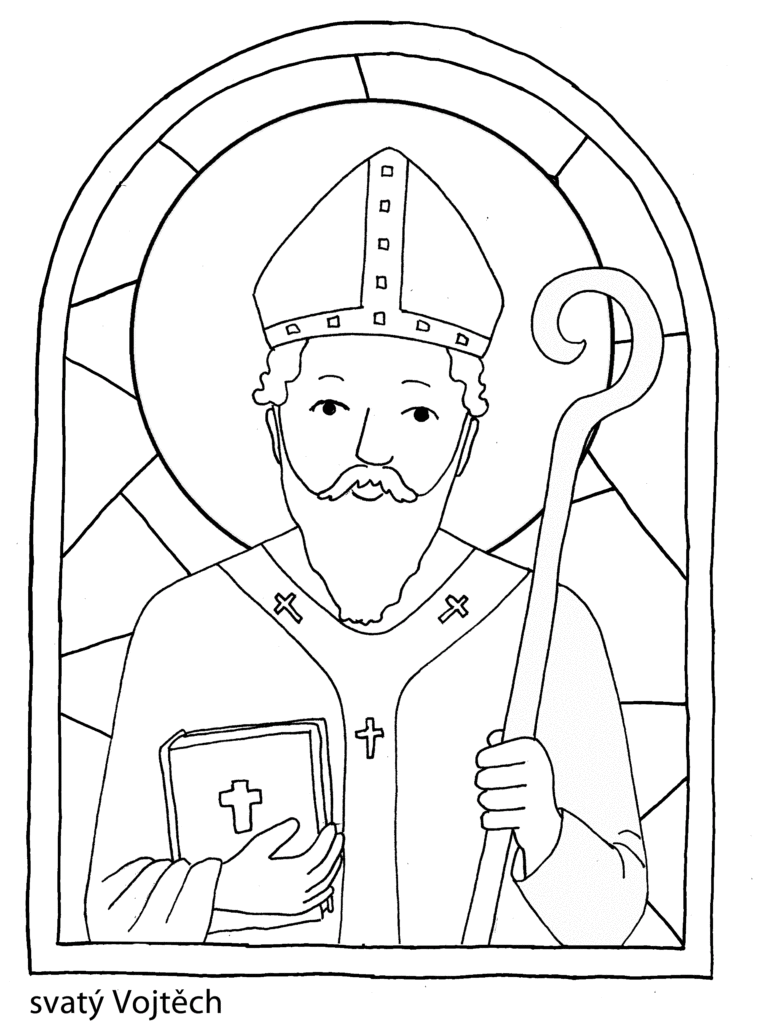
You may also be interested in reading American Czechs and their Religious Beliefs.
We know that you could spend hours, days, weeks and months finding some of this information yourselves – but at this website, we curate the best of what we find for you and place it easily and conveniently into one place. Please take a moment today to recognize our efforts and make a donation towards the operational costs of this site – your support keeps the site alive and keeps us searching for the best of our heritage to bring to you.
We rely solely on your donations to keep the project going.
Thank you in advance!
If you have not already subscribed to get TresBohemes.com delivered to your inbox, please use the form below now so you never miss another post.



